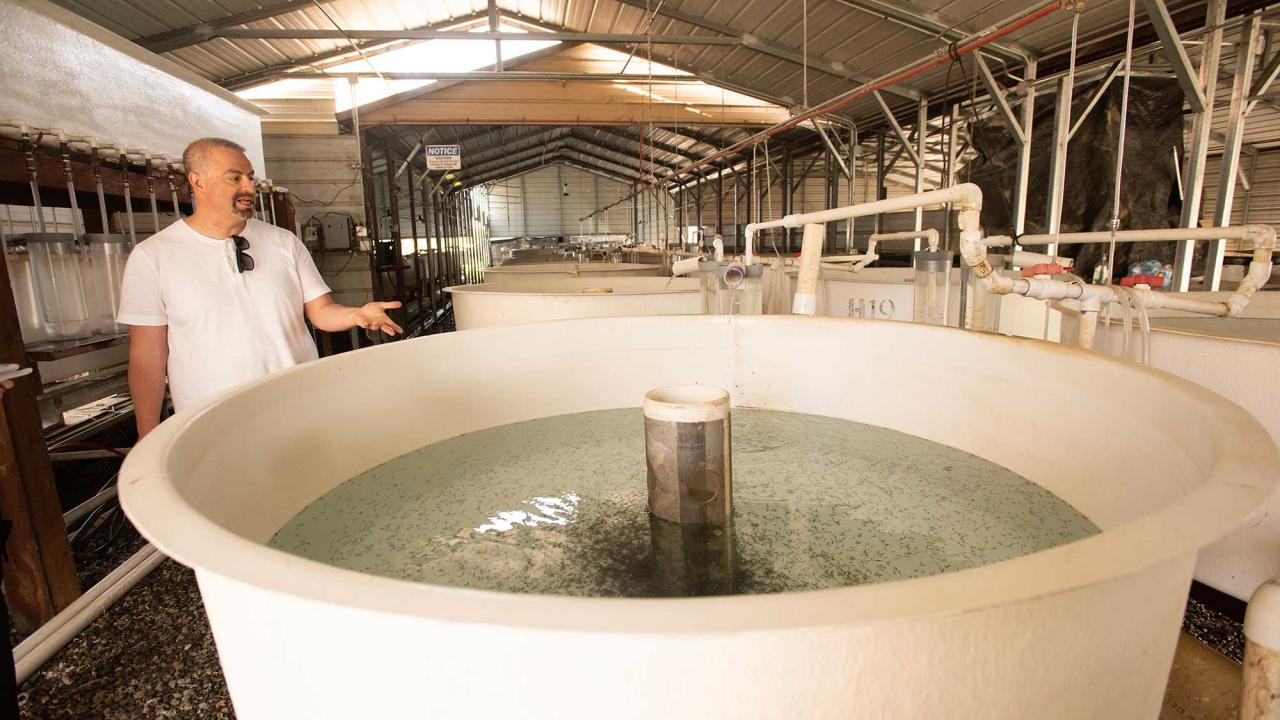Ali Bolourchi ’05, M.B.A. ’12, leads a tour of his caviar farm in Wilton, California, highlighting the long process of raising white sturgeon, pointing out that these innovations were developed at “Caviar U.”
He means UC Davis.
Bolourchi is president of Tsar Nicoulai, now the largest caviar-producing company in the United States, thanks to the acquisition last year of Sterling Caviar.
“I think of UC Davis as Caviar U, and we're trying to do our best to help educate [everyone],” Bolourchi said. “Sacramento County is actually the birthplace of caviar farming, so this is the epicenter of where it all started.”
Caviar in Sacramento
UC Davis Professor Emeritus Serge Doroshov is considered the father of sturgeon aquaculture in North America. He died in 2020.
A culinary luxury going back to ancient civilizations, caviar remains a staple of fine dining. But overfishing of sturgeon created a dilemma.
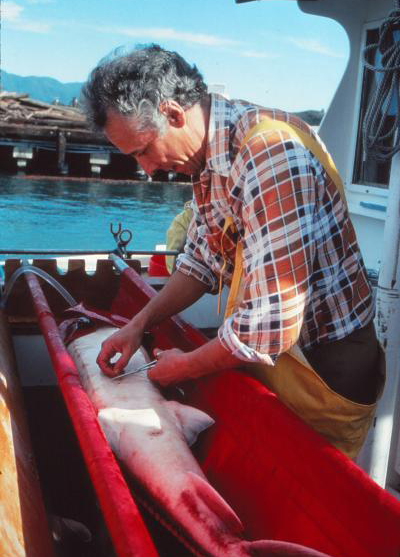
Starting in 1979, Doroshov explored farming sturgeon for meat and caviar as a way to relieve the pressure on wild stocks of the endangered fish. He and his research teams began work with reproductive physiology and broodstock development of white sturgeon.
“We couldn't keep capturing wild fish from the Sacramento River,” said Joel Van Eenennaam, a retired UC Davis research associate who worked with Doroshov. He continues to be a consultant in the field.
But first they had to create the foundation of sturgeon farming in Northern California. What do they need to eat in captivity? How long until they mature? Even how can you tell the difference between a male and female?
This led to the 1987 formation of the UCD/Industry Broodstock Development Committee and the Hatchery Manual for White Sturgeon being published in 1988.
Caviar production in the U.S. began in 1994. Doroshov continued to work on long-term management of domestic broodstock, efficient caviar production and improvements to caviar quality.
Farms like Tsar Nicoulai offered partnership for fostering these innovations.
Enter the Bolourchi family.
“We are creating the perfect environment for this fish to spawn,” Bolourchi said. “It's a very finicky fish, you know, and it's a lot of work.”
A UC Davis connection
Bolourchi’s parents originally owned a caviar import company. Passionate foodies, they understood the delicacy and the business. As they looked for local producers, they got to know the Engstrom family, original owners of Tsar Nicoulai.
“When they retired, there was an opportunity for my parents to take over stewardship of the farm,” Bolourchi recalled. “Their goal was to grow a Caspian delicacy under California sunshine.”
Since then, they expanded the farm’s location in Wilton, California, from 10 acres to its current size of 40 acres. (And there are other locations including Concord and Dixon.)
But Bolourchi himself didn’t always envision joining the family business.
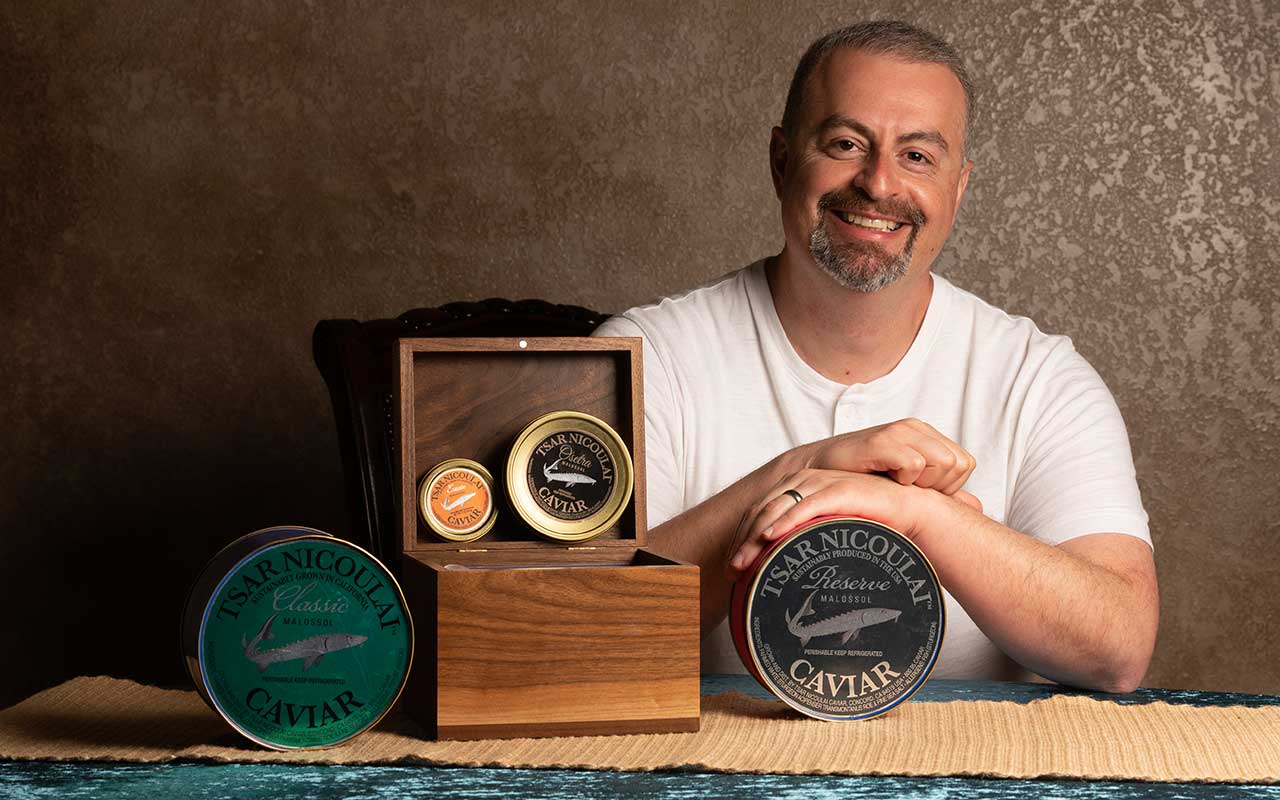
He attended college first as an engineering major. It wasn’t a good fit, and he graduated with a degree in economics from UC Davis. The love of food was always apparent.
“When I finally got an A plus in a class, it was in food science,” he said.
Still, he pursued a career in data management. He was working at the rating company Nielsen in Los Angeles, when food science came up again. His boss saw him watching Iron Chef on his laptop, leading to a conversation about caviar.
“He said I would probably be a great asset [to the family business],” he said. “No kid wants to work for their parents, but if someone else tells you it's probably a good idea, you think about it.”
He obtained is M.B.A. from the UC Davis Graduate School of Management in 2012 and was among his parent’s first employees when they purchased the farm in 2014.
“I was able to really advance my understanding of marketing, product development, and also work within the university to get more knowledgeable about aquaculture and UC Davis’ connection to caviar farming, realizing it is Caviar U and making friendships with professors and departments of aquaculture.”
What’s next for Tsar Nicoulai
Under Bolourchi’s leadership, the farm is exploring new products for vendors like Costco and Whole Foods. Smoked sturgeon meat, jerky and sturgeon chips are all on the menu.
Customers can taste the caviar at the Tsar Nicoulai Caviar Cafe in the Ferry Building in San Francisco. Bolourchi’s wife, Marai, co-owner of the business, also runs the cafe. Visitors can try the basics, but also unique combinations like chocolate with caviar and sturgeon croque monsieur.
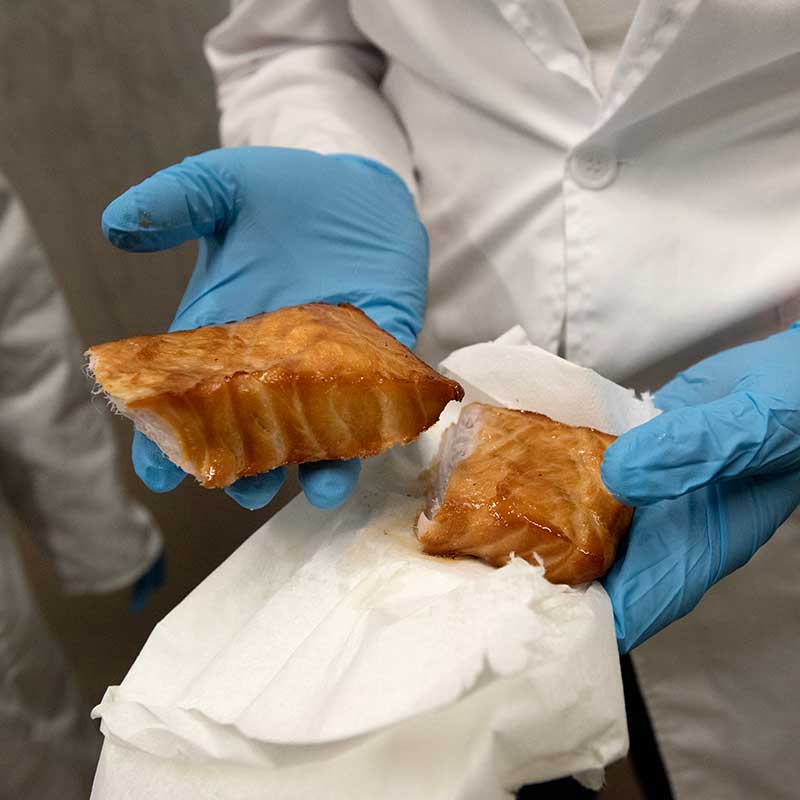
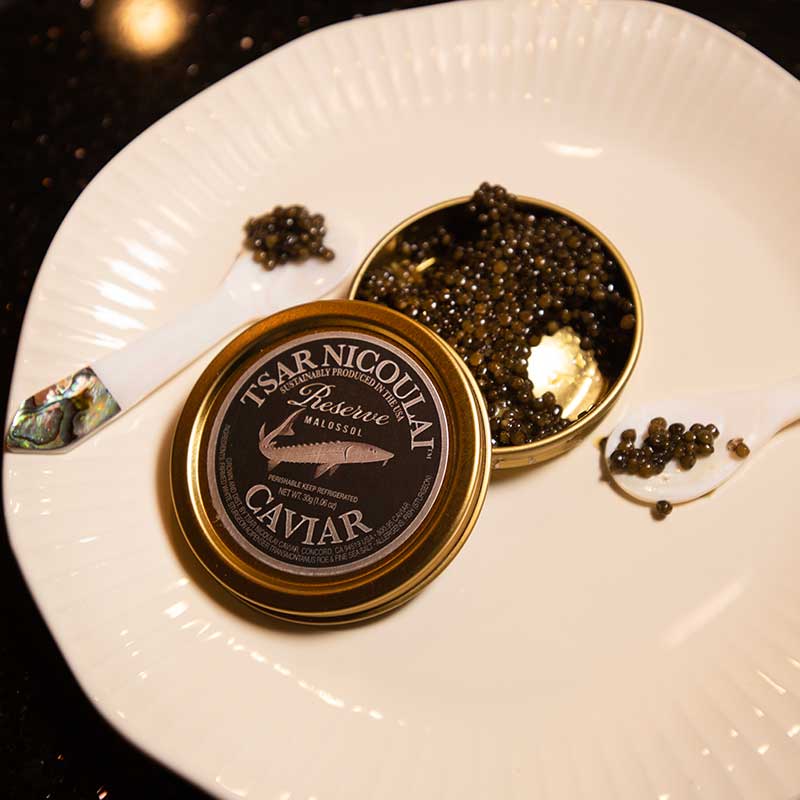
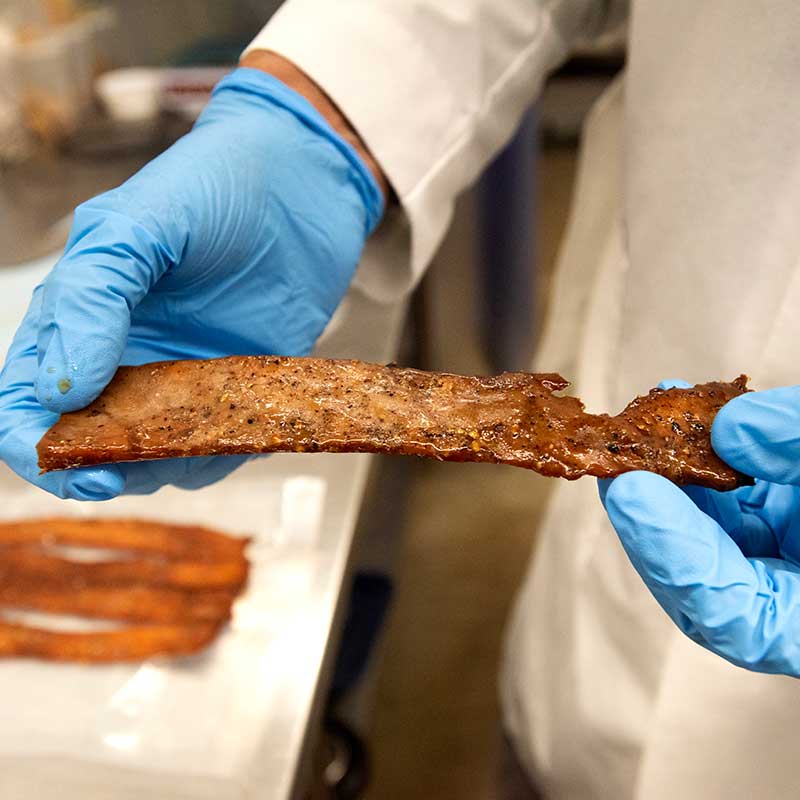
“She has an avant-garde approach and just has fun with it,” Bolourchi said.
Research at Tsar Nicoulai also continues. At UC Davis, Jackson Gross, a Cooperative Extension aquaculture specialist, has sturgeon-specific research projects and acts as an industry advisor. At Bolourchi’s farm, Gross is developing more sustainable fish diets and how those diets improve fish health, how to improve meat quality associated with processing, how to improve fish welfare at end of life, improving methods of sex determination using machine learning. Some of his current research funding comes from the U.S. Department of the Navy and the California Department of Food and Agriculture.
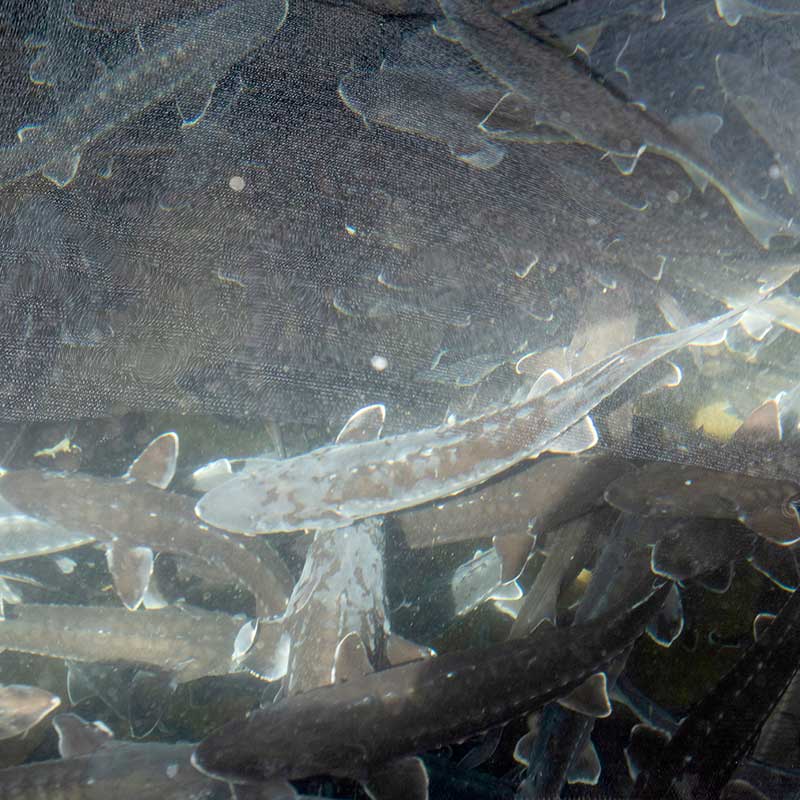
White Sturgeon Facts
- Largest freshwater fish in North America
- Can reach lengths of 15 to 20 feet
- Can live longer than 100 years
- A 60-inch female averages 200,000 eggs
Van Eenennaam also continues to follow up on projects and train the next generation of aquaculture researchers. He does ultrasound training — a way to determine sex and stage of maturity. (Farm-raised female sturgeon take seven to eight years to mature, compared to the wild fish, which take at least 15 years.)
“The industry now is [looking at] how to improve caviar quality, in terms of firmness and size and color, selecting genetics for potential size and color of eggs,” he said. “There's still a lot of interesting research that can be done.”
Students from the GSM have also come to see the farm in Wilton. Through field trips and other experiences, students meet industry leaders and write papers about what they learned, challenges faced by a specific industry and their approach to solving these issues.
“The benefit of visiting each of these companies and farms is that we get to see real-life situations and problems and learn how to solve them,” said Temidire Dada, a M.B.A. student from the class of 2025. “I took this as an opportunity to meet industry leaders in the food industry.”
The acquisition of Sterling Caviar means Bolourchi is in expansion mode. The company now employs more than 100 people across multiple farms.
He was featured in Bon Appetit last year and estimated he aims to produce 25 to 30 metric tons of caviar each year within the next decade.
That, and getting the region recognition for its role in the caviar industry.
“For me, it’s become my life's work to put Sacramento on the food map and let people know the best caviar in the United States comes from here,” Bolourchi said. “It's one of the best caviars in the world. When people think of that salted butter taste, they’ll think of white sturgeon grown in Sacramento County.”
